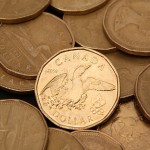The Russian ruble traded little changed after touching a seven-week high against the US dollar, following a sign of a possible thaw in relations between Russia and the West, as Russian President Vladimir Putin pulled part of the troops, situated on the Ukraines border.
USD/RUB touched a session low at 34.945 at 06:30 GMT, after which the pair trimmed losses to trade little changed at 35.053 at 14:52 GMT. Support was likely to be received at February 13th low, 34.795, while resistance was to be met at March 31st high, 35.807.
The Micex Index rose 0.55 percent to 1 376.69 and has declined 9.2 percent so far this year.
Rubles demand was heightened as a sign of a possible thaw in relations between Russia and the West calmed the markets. In a gesture that could defuse the built-up tension surrounding Ukraine, Russian troops were partially withdrawn from the border to Ukraine before a NATO diplomatic meeting is held in Brussels today.
Russian President Vladimir Putin informed German Chancellor Angela Merkel of his plans to partially withdraw some troops in a phone call, according to a statement by the German Chancellors office released today in Berlin. They also shared their opinions on different measures, which can help stabilize the situation in Ukraine and Transnistria, a breakaway Moldovan region, which just like Crime is pro-Russian.
Last Wednesday, the US and the EU agreed to work on preparing possible tougher economic sanctions against Russia, including its energy sector, and also reduce Europe’s dependence on Russian energy exports. President Obama warned after a meeting with European leaders that Moscow’s isolation will deepen, if it continues its current course.
Obama said on Thursday in Rome that the US and its allies are closely studying Russia’s military, energy and finance sectors to determine which sanctions could have the most powerful impact, if a new round of penalties should be imposed. The US Senate and House of Representatives passed bills imposing additional sanctions on Russian officials with allegedly close ties to President Vladimir Putin.
Meanwhile, greenbacks demand was supported after a report by the Institute for Supply Management showed its manufacturing index rose to 53.7 last month, from 53.2 in February. The increase, however was smaller than expected, as analysts predicted the index will reach 54.0 in March. The ISM manufacturing index covers 18 industries, most of which reported expansion in March, led by the petroleum sector.
ISM’s gauge of new orders in the US also jumped, reaching 55.1 in March from 54.5 in the preceding month. The index of orders waiting to be executed surged to 57.5 last month from 52.0 in February, the strongest since April 2011.
However, demand for the US dollar continued to be pressured after Federal Reserve Chair Janet Yellen said yesterday at a conference in Chicago that the central bank needed to do more to fight against unemployment, because keeping interest rates near zero for more than five years and swelling its balance sheet with asset purchases seemed not to be enough. She also added that the US economy still needed monetary stimulus for “some time” and that most of the Fed officials shared the same opinion.
Market players deemed Yellen’s comments as rather dovish, as she signaled the central bank will press on with trimming stimulus, but at the same time, the Fed will not be in a hurry to raise borrowing costs.
Elsewhere, USD/CAD hit a session high at 1.1070 at 08:15 GMT, after which the pair trimmed daily losses to trade little changed at 1.1044 at 13:34 gmt, losing 0.05% for the day. Support was likely to be found at March 31st low, 1.1003, while resistance was to be encountered at March 28th high, 1.1078.




